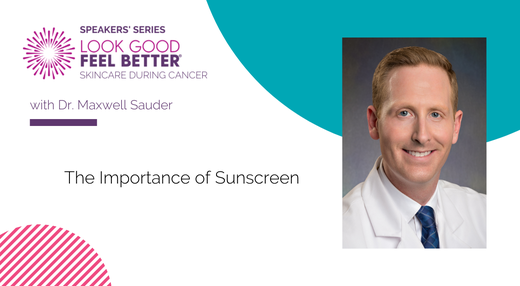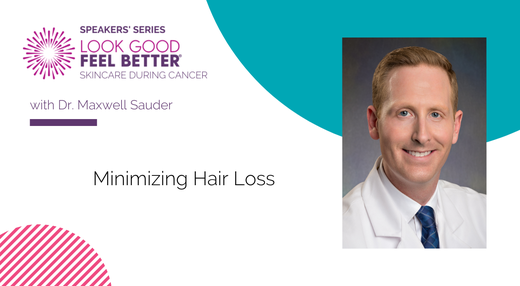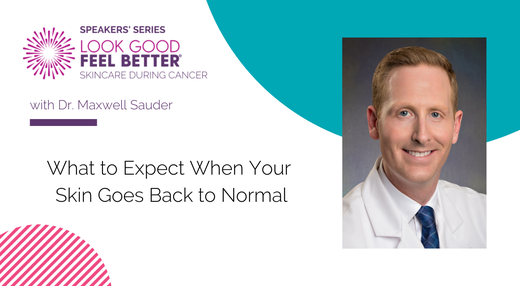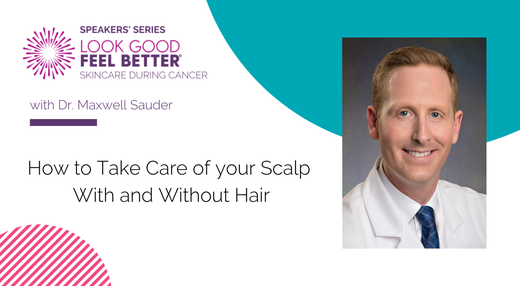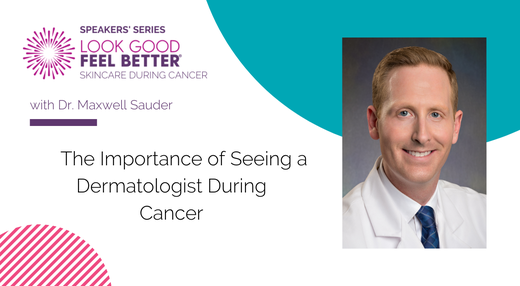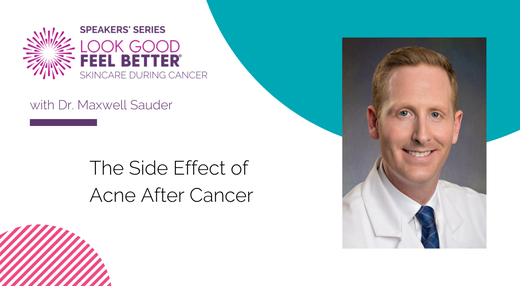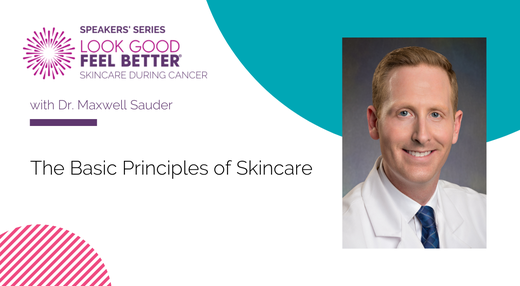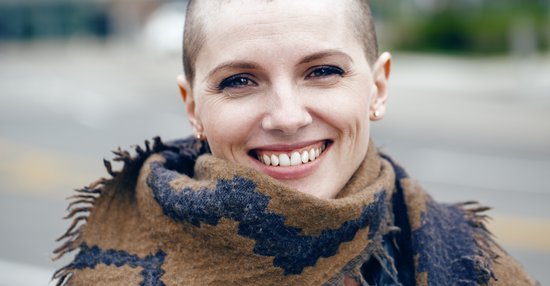Skincare during cancer treatment – our conversation with Dr. Maxwell Sauder, Onco-Dermatologist.
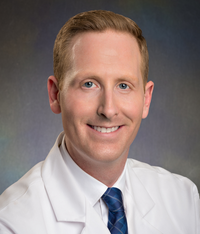
When diagnosed with cancer, visiting a dermatologist may be the last thing you think about. However, skin-related conditions caused by cancer treatments are common. To answer all your questions and learn about skincare before, during, and after cancer treatment, we hosted our first Speakers Series event September 2020. We had the privilege to be joined by Dr. Maxwell Sauder, Onco-Dermatologist, who shared his recommendations on caring for your skin and scalp during treatment and beyond.
Dr. Sauder is a board-certified dermatologist in Canada (FRCPC) and the United States (DABD) with additional fellowship training in cutaneous oncology. He is a former faculty member of Harvard Medical School where he focused on skin toxicities of anti-cancer treatments (STATs). He is currently an onco-dermatologist at Princess Margaret Cancer Centre where he assists in the management of complex cutaneous malignancies and STATs. He also practices at Toronto Dermatology Centre where he is the director of the Pigmented Lesion Clinic that uses cutting edge artificial intelligence technology to identify and manage skin cancers or precancerous lesions at the earliest possible stage.
Read our Q&A or watch the videos below discussing Dr Sauder's mantra when it comes to skincare basic principles, the recommended skincare products, shampooings, and what to avoid, how to effectively protect your skin from the sun during treatment, scalp care and advice on how you can minimize hair loss and what the "back to normal" could look like for your skin.
Please note that the information provided is intended as general information and not meant to replace the medical advice you receive from your primary care team. You should always consult your healthcare practitioner with any questions or concerns.
